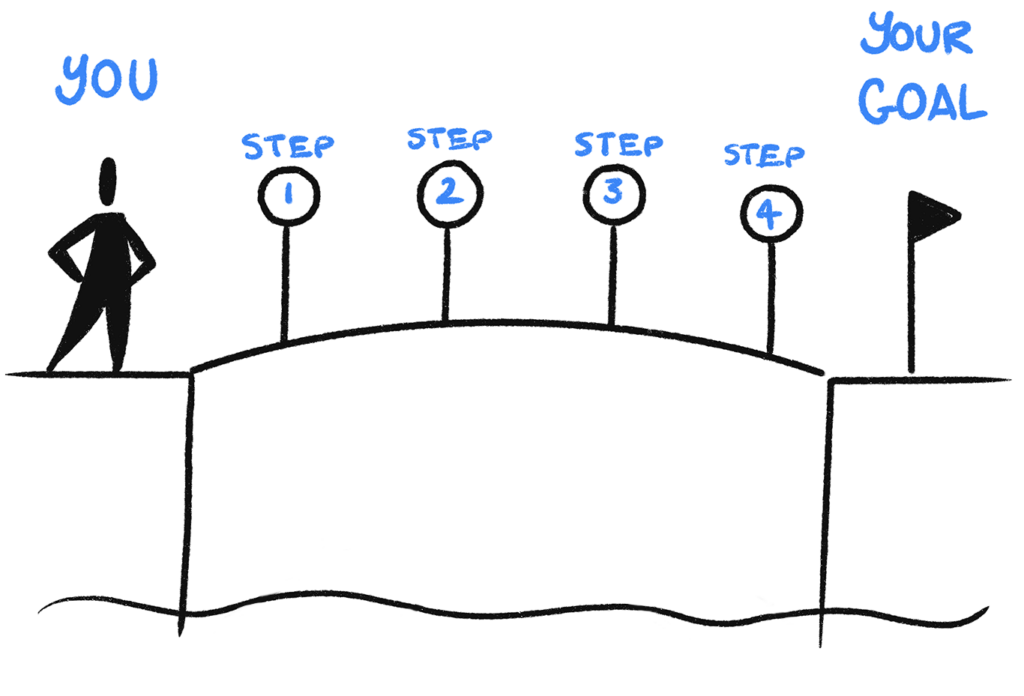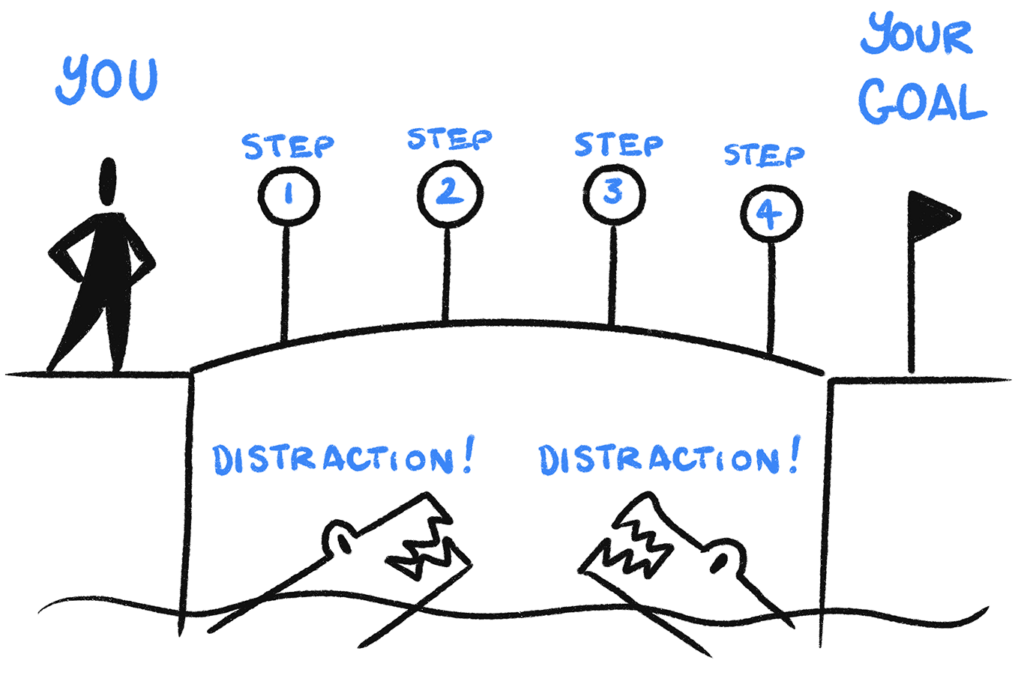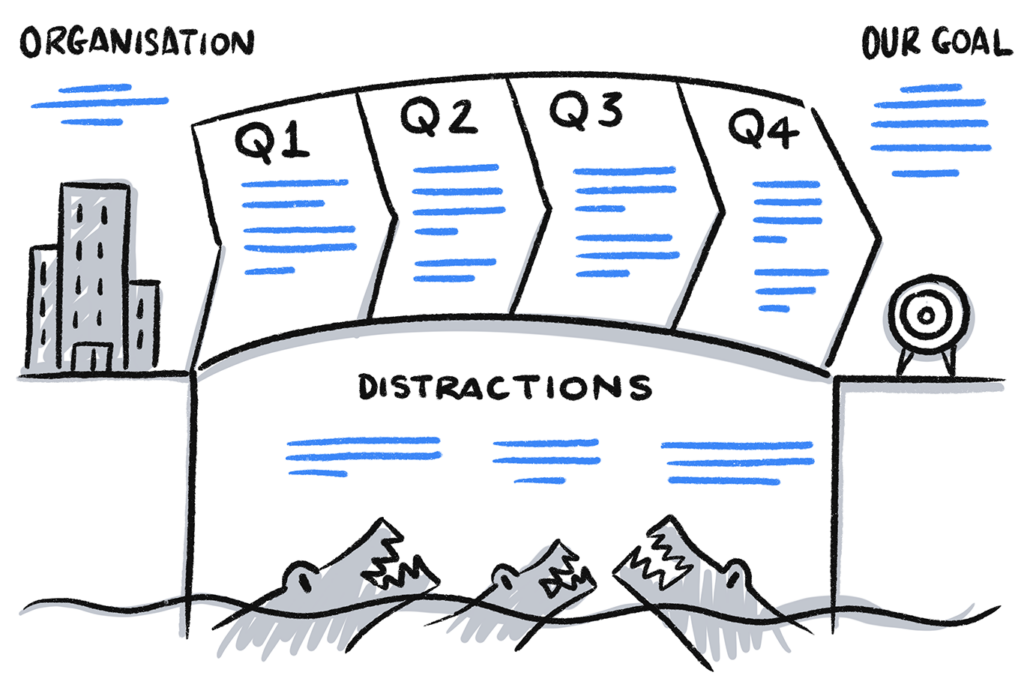In the last post, I showed you an effective way how to chart out a goal and how to get there, using the simple ‘Build a Bridge‘ visual framework. It included a way to plot out the different steps you’d need to take to reach that goal, and the distractions you’d have to watch out for.
You might have been thinking: “What about the things that get in the way of achieving that goal? How do I show those?” And well you should. We come up against barriers all the time, don’t we? I’m always a fan of not loading too much into one sketch to explain something, otherwise it loses clarity. So here’s another type of sketch that might come in handy for you or your team. This is the Goal Barriers visual framework. Take a look, and have a go at sketching it yourself:
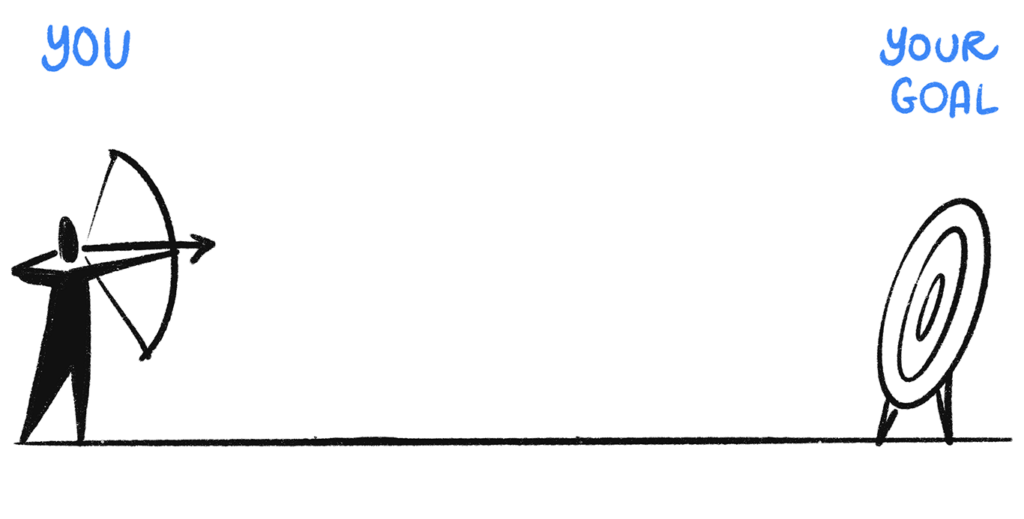
It’s pretty simple, but as you’ll see it will communicate a lot. On the left is you. On the right, the target is your goal. That goal could be losing 10Kg, or launching a campaign at work… whatever is meaningful for you. The idea is that you can shoot your metaphorical arrow and hit your target. Now I’m going to add walls in the middle, getting in the way of you hitting that target with your arrow:
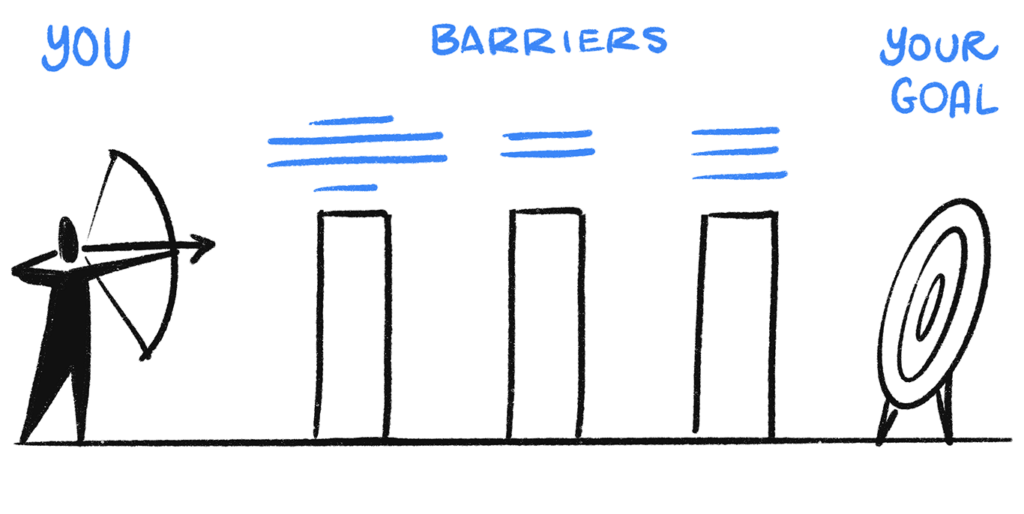
It can be incredibly insightful simply thinking and visualising exactly what barriers there are to your goal. Try it yourself, and try to be specific: draw a wall representing each barrier you can think of, and write what the barrier is above each wall. Is it lack of time? A special stakeholder who won’t get on board? Another project in the way, that needs to finish first?
Let’s take this a step further. Just like a wall is made up of bricks, each challenge is probably made up of smaller parts. Draw a few lines across each wall, like this:
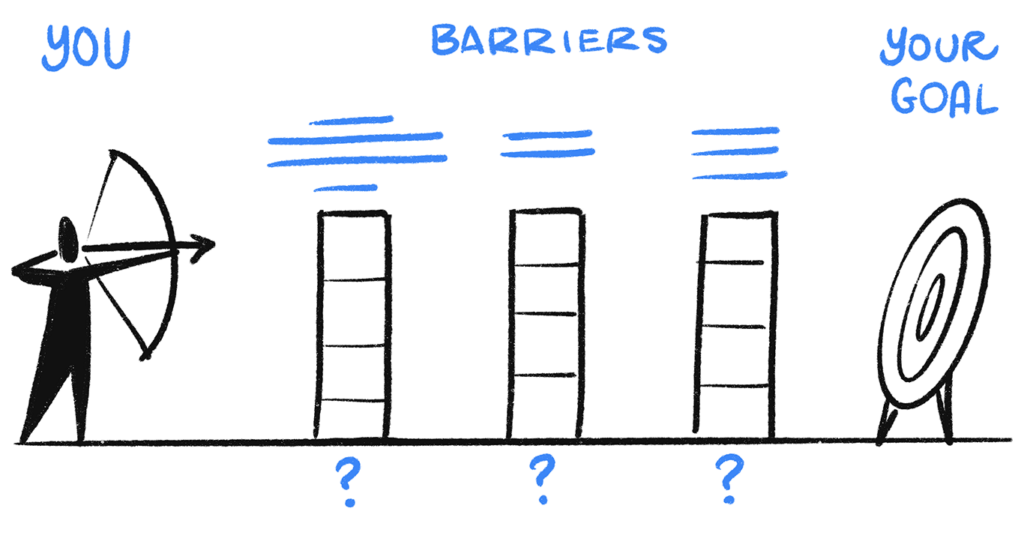
We can now add a question below each wall about how we can break down that wall. For example, if the target is to lose 10Kg, and the first wall is “No time to exercise”, the question can be “How might I get some time to exercise?” Now – and here’s another useful thing about visualising barriers and cutting them down – you don’t have to remove the wall entirely, but just enough for the arrow to go over it.
Visualise what are some things you could do to start chipping away at those walls. You might even want to sketch those on the same piece of paper, too. Pretty soon, your walls could look like this, and you can then hit your target:
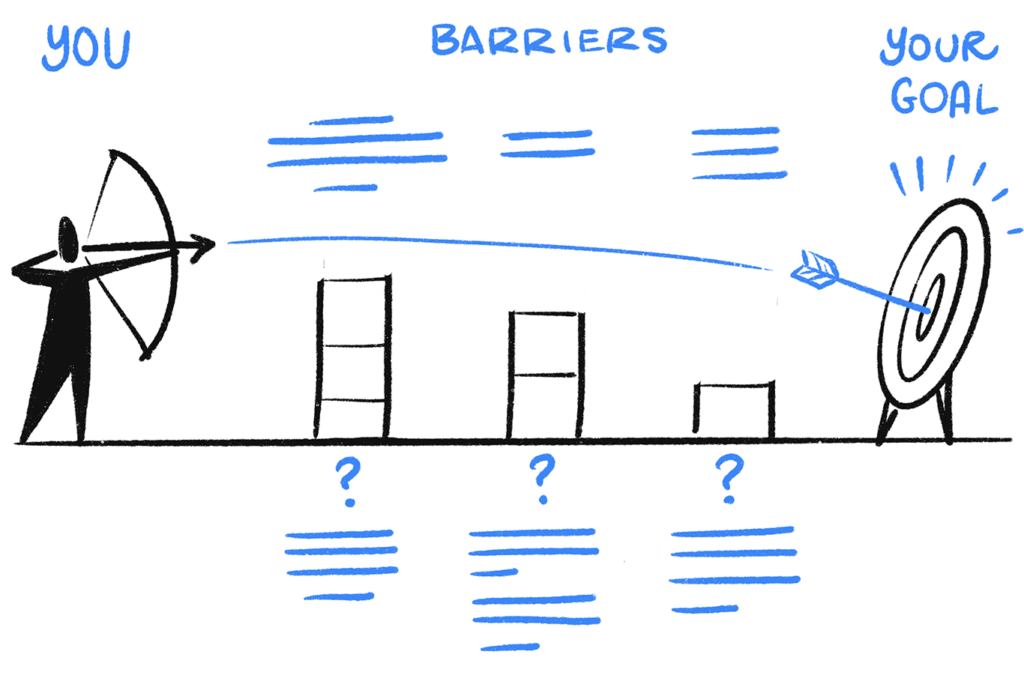
So go ahead and visualise (1) your target; (2) your barriers; and (3) how you’re going to knock those barriers down. Once they’re out of your head and onto paper, you’re one step closer to knocking them down in real life.
Was it good for you?
I’d be delighted to hear any feedback or questions you have about this Goal Barriers visual framework. Imagine if your whole team could do this together, and start busting down those barriers together?

